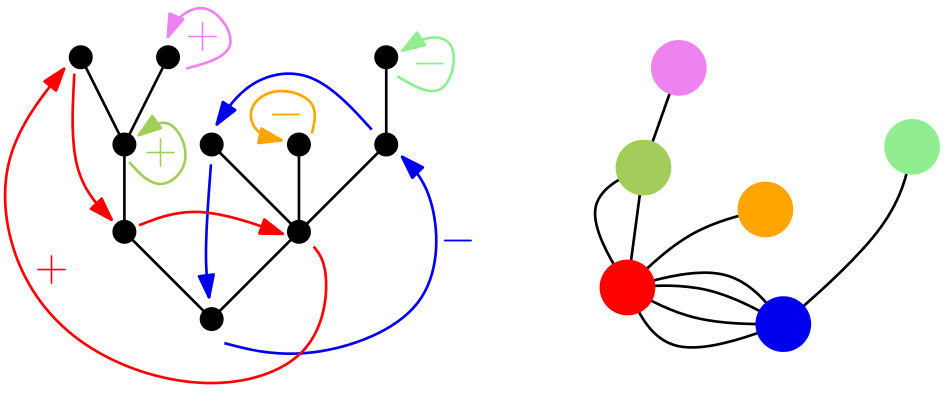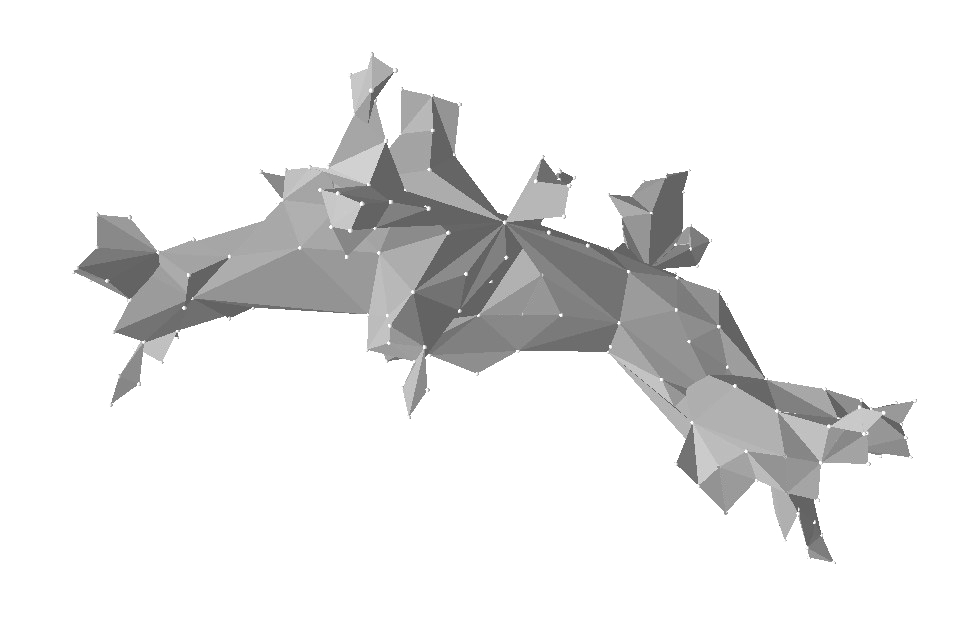Journée Cartes du 9 avril 2019
Lieu : Université Paris 13, Campus de Villetaneuse -- Venir à Paris 13
Les exposés auront eu lieu en salle B405 du LAGA, au 4ème étage du bâtiment B de l'Institut Galilée -- Plan du campus pour arriver au bâtiment B
Orateurs : Jérémie Bettinelli, Luis Fredes, Erik Slivken, Guillaume Chapuy
Organisateurs : Valentin Bonzom, Bénédicte Haas, Philippe Marchal
Soutien : FSMP.
Programme
- 10h00-10h30: Café d'accueil
- 10h30-11h30: Jérémie Bettinelli, Slit-slide-sew bijections for bipartite and quasibipartite plane maps
- 11h30-12h30: Luis Fredes, Bijections for tree-decorated maps and applications to random maps
- 12h30-14h00: Déjeuner
- 14h00-15h00: Erik Slivken, Square permutations are typically rectangles
- 15h00-16h00: Guillaume Chapuy, Sur l'énumération asymptotique des triangulations coloriées de variétés d-dimensionnelles
Résumés
- Jérémie Bettinelli, Slit-slide-sew bijections for bipartite and quasibipartite plane maps
We unify and extend previous bijections on plane quadrangulations to bipartite and quasibipartite plane maps. Starting from a bipartite plane map with a distinguished edge and two distinguished corners (in the same face or in two different faces), we build a new plane map with a distinguished vertex and two distinguished half-edges directed toward the vertex. The faces of the new map have the same degree as those of the original map, except at the locations of the distinguished corners, where each receives an extra degree. The idea behind this bijection is to build a path from the distinguished elements, slit the map along it, and sew back after sliding by one unit, thus mildly modifying the structure of the map at the extremities of the sliding path. This bijection provides a sampling algorithm for uniform maps with prescribed face degrees and allow to recover Tutte's famous counting formula for bipartite and quasibipartite plane maps.
In addition, we explain how to decompose the previous bijection into two more elementary ones, which each transfer a degree from one face of the map to another face. In particular, these transfer bijections are simpler to manipulate than the previous one and this point of view simplifies the proofs. - Luis Fredes, Bijections for tree-decorated maps and applications to random maps
In this talk, we introduce a new family of maps: the (not necessarily spanning) tree-decorated maps. To study this class of maps, we introduce a bijection which allows us to deduce combinatorial results, recovering as a corollary some results about spanning-tree decorated maps, and to understand local limits. Finally, we discuss the possible metric scaling limit of this map: the shocked map. We give certain properties and give the conjectured continuum construction. This is a work in progress with Avelio Sepúlveda. - Erik Slivken, Square permutations are typically rectangles
Square permutations are permutations were every point is a record (left or right, max or min). We give a simple algorithm that produces such an object (asymptotically almost surely) uniformly at random. From this algorithm we are able to give a description of interesting scaling limits and explore other generalizations. We show that a typical square permutation (properly scaled) looks like a random rectangle embedded in the unit square and specify the distribution of the rectangle. We can also describe the fluctuations about the rectangle in terms of coupled Brownian motions. This is based on joint work with Jacopo Borga. - Guillaume Chapuy, Sur l'énumération asymptotique des triangulations coloriées de variétés d-dimensionnelles
En dimension d>=3 on prend n simplexes, et on recolle leurs facettes de manière arbitraire. On obtient ainsi un espace topologique qui est a priori une pseudo-variété, mais pas toujours une variété. De combien de manières peut-on le faire, asymptotiquement, pour obtenir une variété? On donne des réponses (très) partielles à cette question sous la forme de bornes inférieures et supérieures superexponentielles. En particulier on détermine le comportement surexponentiel en dimension 3, dans le cas des triangulations coloriées issues des modèles de tenseurs. Au passage on croise des questions rigolotes et nouvelles d'énumération de graphes que nous laissons partiellement ouvertes. Travail en commun avec Guillem Perarnau.

